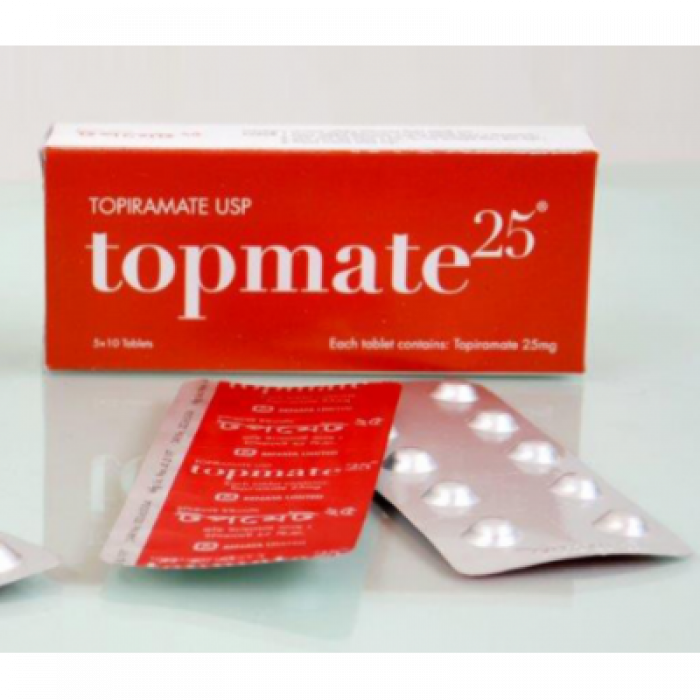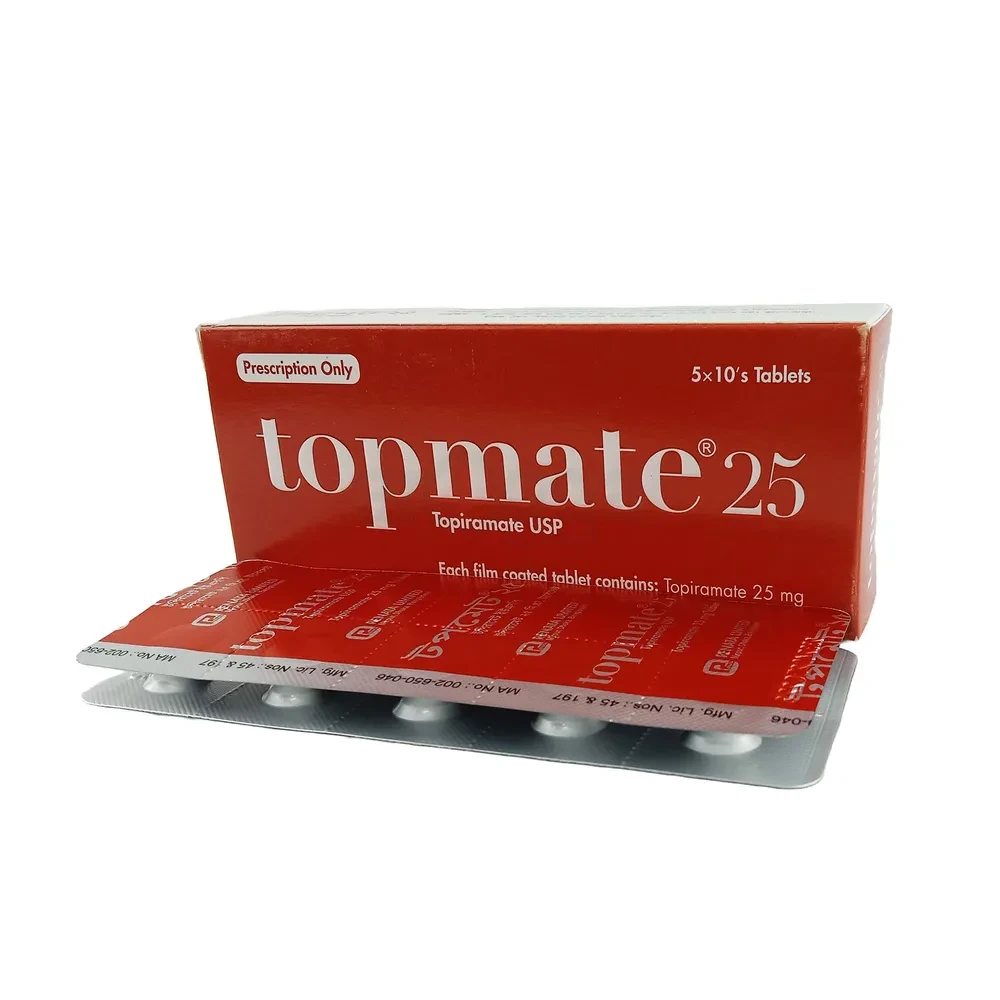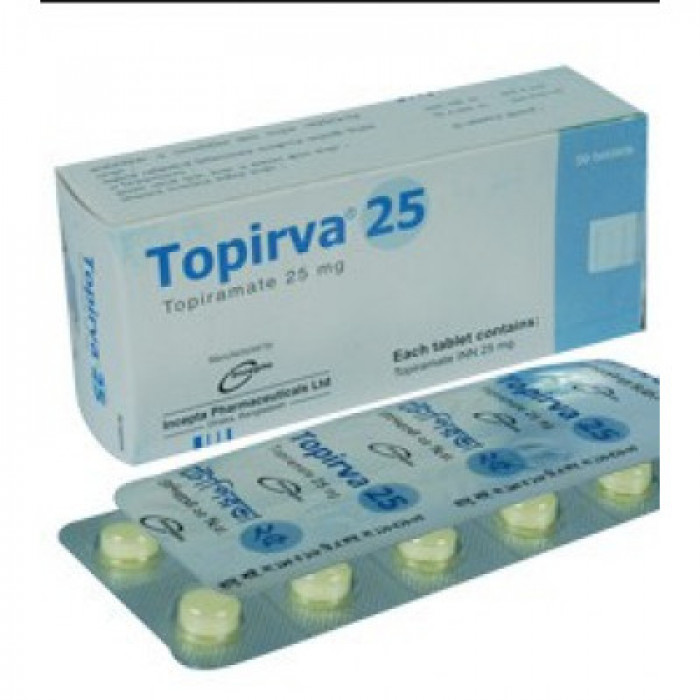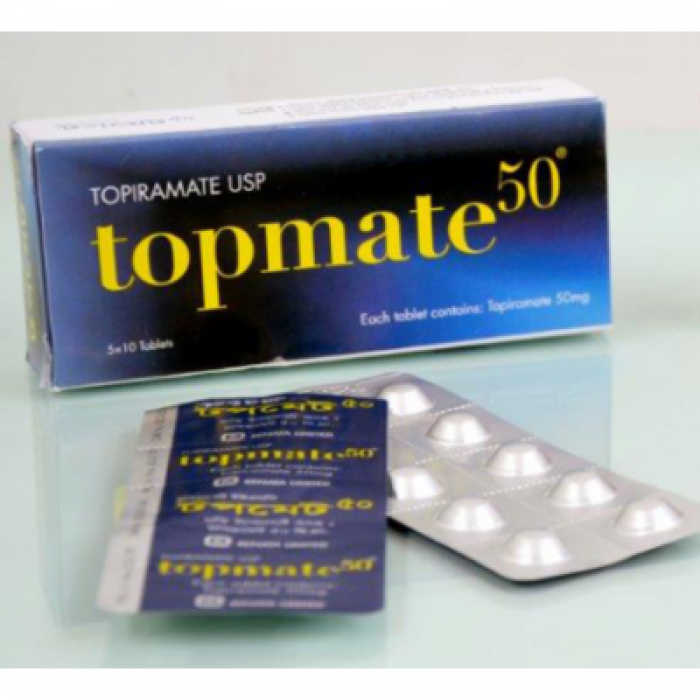
✔ 100% Authentic Product
👁️ Currently Viewing 671
Topmate is prescribed as:
Epilepsy:
- For adults and children aged 6 years and older who have been newly diagnosed with epilepsy, specifically for the treatment of generalized tonic-clonic seizures or partial seizures (with or without secondary generalization).
- For adults and children over 2 years old whose partial seizures (with or without secondary generalization) are not adequately managed by conventional first-line antiepileptic drugs. It is also indicated for seizures associated with Lennox-Gastaut Syndrome and primary generalized tonic-clonic seizures.
Migraine:
Topmate is approved for migraine prophylaxis in adults. Prophylactic treatment may be considered under the following conditions:
- Patients experience three or more migraine episodes per month.
- Frequent migraines that significantly disrupt daily activities.

100% Genuine Products, Guaranteed
Safe & Secure Payments, Always
Fast, Secure & Efficient Delivery
Proper Packaging
 Cash on Delivery - All over Bangladesh
Cash on Delivery - All over Bangladesh Regular Delivery - 8-12 Hours, Dhaka City*
Regular Delivery - 8-12 Hours, Dhaka City* Regular Delivery - 24-48 Hours, All Over Bangladesh*
Regular Delivery - 24-48 Hours, All Over Bangladesh* ফ্রি ডেলিভারি! - ১৪৯৯ টাকা+ অর্ডারে ঢাকা
শহরে ।
ফ্রি ডেলিভারি! - ১৪৯৯ টাকা+ অর্ডারে ঢাকা
শহরে । ফ্রি ডেলিভারি! - ২৯৯৯ টাকা+ অর্ডারে ঢাকার
বাহিরে ।
ফ্রি ডেলিভারি! - ২৯৯৯ টাকা+ অর্ডারে ঢাকার
বাহিরে ।
✅ Description:
A seizure results from an abnormal and uncontrolled electrical discharge in the brain, causing a temporary disruption in brain function. This can manifest as impaired alertness, unusual sensations, focal involuntary movements, or convulsions. Common seizure types include tonic-clonic seizures and partial-onset seizures.
The precise mechanisms by which topiramate exerts its effects on seizures and migraines remain incompletely understood. However, several properties of this medication likely contribute to its therapeutic benefits. Topiramate impacts various neural pathways, including voltage-dependent sodium channels, GABA receptors, and glutamate receptors.

GABA and Glutamate Modulation:
- Topiramate enhances GABA-A receptor activity at brain non-benzodiazepine receptor sites. GABA-A receptors are typically inhibitory, helping to suppress neuronal activity.
- It also inhibits glutamate activity at AMPA and kainate receptors, which are normally excitatory.
- By increasing inhibitory (GABA) activity and reducing excitatory (glutamate) activity, topiramate reduces neuronal excitability, effectively preventing seizures and migraine episodes.
Voltage-Dependent Sodium Channel Blocking:
- Topiramate blocks voltage-dependent sodium channels, which further prevents the propagation of seizure activity.
Carbonic Anhydrase Inhibition:
- Topiramate inhibits certain carbonic anhydrase isozymes. While the clinical significance of this action remains unclear, it may contribute to its pharmacological profile.
✔️ Side Effects
Common:
Nausea, abdominal pain, dyspepsia, diarrhea, dry mouth, weight loss, paraesthesia, hypoaesthesia, fatigue, headache, dizziness, speech disorder, insomnia, impaired memory and concentration, depression, anxiety, and visual disturbances.
Less Common:
Suicidal ideation, metabolic acidosis, alopecia, taste disturbances, and reduced sweating in children.
Rare:
Leucopenia, thrombocytopenia, and serious skin reactions.
✔️ Dosage & Administration
Epilepsy: Monotherapy
Adults and children over 16 years:
- Start with 25 mg nightly for 1 week.
- Increase dosage at 1- or 2-week intervals by 25-50 mg/day, divided into two doses.
- The initial target dose is 100 mg/day, with a maximum recommended dose of 400 mg/day.
Children aged 6–16 years:
- Begin with 0.5–1 mg/kg nightly during the first week.
- Increase dosage by 0.5–1 mg/kg/day at 1- or 2-week intervals, divided into two doses.
- The target dose is 3–6 mg/kg/day, though higher doses up to 16 mg/kg/day have been occasionally used.
Epilepsy: Adjunctive Therapy
Adults and children over 16 years:
- The minimum effective dose is 200 mg/day.
- Typical dose range: 200–400 mg/day, divided into two doses.
- Some patients may need up to 800 mg/day (maximum recommended).
Children aged 2–16 years:
- Recommended dose: 5–9 mg/kg/day, divided into two doses.
- Start with 25 mg nightly for the first week.
- Increase dosage by 1–3 mg/kg/day at 1- or 2-week intervals to achieve optimal response.
- Doses up to 30 mg/kg/day have been studied and were generally well tolerated.
Migraine Prophylaxis
Adults and children over 16 years:
- Start with 25 mg nightly for 1 week.
- Increase dosage by 25 mg/day at 1-week intervals.
- The recommended daily dose is 100 mg/day, divided into two doses.
- Some patients may benefit from a lower dose of 50 mg/day.
Children under 16 years:
- Topiramate has not been studied for migraine prophylaxis in this age group.
✔️ Interaction
- Antiepileptic Drugs (AEDs):
Topmate generally does not affect the plasma concentrations of phenytoin, carbamazepine, valproic acid, phenobarbital, or primidone. However, in some cases, it may increase phenytoin plasma concentrations. - CNS Depressants:
Use with caution alongside alcohol or other CNS depressants due to additive sedative effects. - Oral Contraceptives:
Topmate increases the clearance of the estrogenic component of combined oral contraceptives, potentially reducing contraceptive efficacy. Use alternatives with at least 50 μg of estrogen or non-hormonal contraceptives. - Lithium:
Lithium pharmacokinetics may be affected at high doses of Topmate (up to 600 mg/day). Monitoring lithium levels is recommended. - Hydrochlorothiazide (HCTZ):
Co-administration may result in significant decreases in serum potassium. - Metformin:
Topmate reduces metformin clearance; clinical implications are unclear. Monitor diabetic control when either drug is added or withdrawn. - Pioglitazone/Glibenclamide:
Monitor diabetic control when combined with Topmate. - Other Agents:
The use of Topmate with nephrolithiasis-inducing agents increases the risk of kidney stones. - Valproic Acid:
Concomitant use can cause hyperammonemia (with or without encephalopathy).
✔️ Contraindications
- Hypersensitivity to any component of Topmate.
✔️ Overdose Effects
- Symptoms: Severe metabolic acidosis.
- Management:
- Recent ingestion: Gastric lavage or induced emesis.
- Activated charcoal can adsorb Topmate.
- Hemodialysis effectively removes the drug.
- Supportive measures and hydration are recommended.
✔️ Pregnancy & Lactation
- Avoid use during pregnancy unless the benefit outweighs the risks.
- Avoid use during breastfeeding.
✔️ Precautions & Warnings
- Gradual withdrawal is recommended to avoid seizure rebound.
- Patients may experience drowsiness, visual disturbances, or blurred vision.
- Caution against driving or operating machinery if affected.
✔️ Storage Conditions
- Store below 30°C, protected from light and moisture.
- Keep out of reach of children.
Disclaimer:
ePharma sole intention is to ensure that its consumers get proper
information as musch as possible. Although we do not guarantee the
accuracy and the completeness of the information that provided and
here information is for informational purposes only.
The information contained herein should NOT be used as a substitute
for the advice of a qualified physician. This may not cover
everything about particular health conditions,
lab tests, medicines, all possible side effects, drug interactions,
warnings, alerts, etc. Please consult your healthcare professional
and discuss all your queries related to any disease or medicine. We
intend to support, not replace, the doctor-patient relationship.








